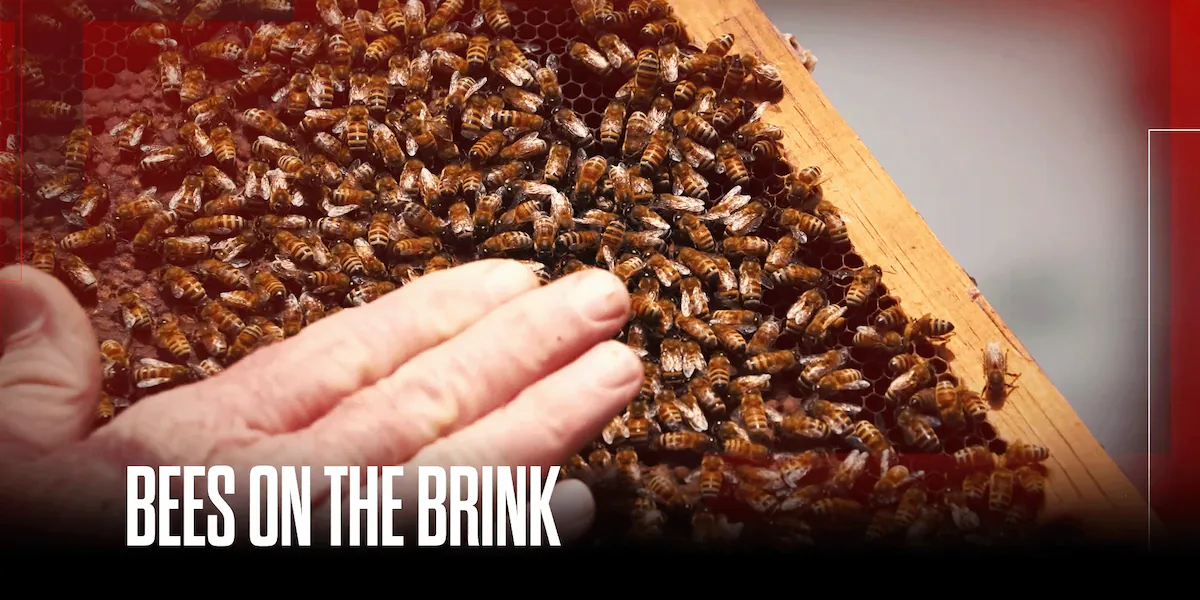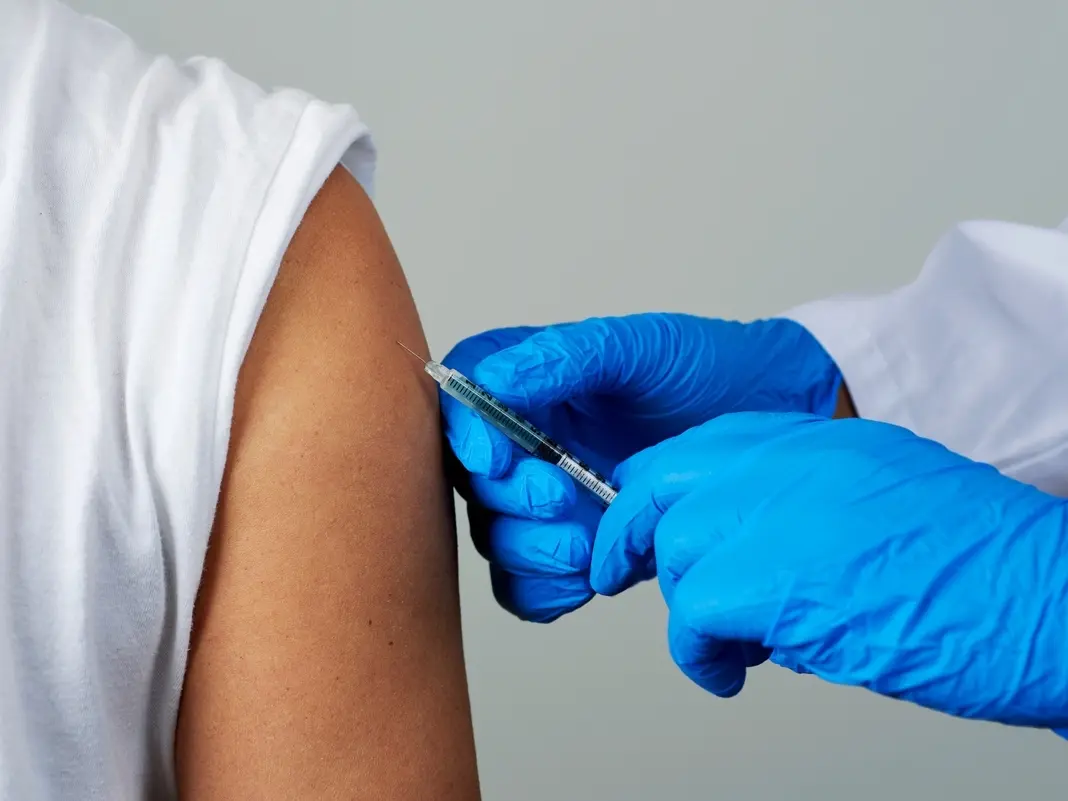Copyright WIS10

(InvestigateTV) — Those berries you love with your breakfast or those almonds for an afternoon snack wouldn’t be possible without bees. But there’s a crisis in the hives. Experts say the pollinators are dwindling at an unprecedented rate, with reports indicating 2025 is on track to be the biggest loss of honeybee colonies in U.S. history. The crisis is threatening the entirety of the food supply, with potential shortages and higher prices on the horizon. For more than 40 years, Jeff Pettis has been managing honeybees. He operates around 100 colonies in Maryland. To him, it’s more than a hobby. “It’s very relaxing for me,” Pettis said. He turns off his phone and takes in the hum of the hive. But these days, that sound is becoming fainter. “I lost about 50% of my hives. That was the heaviest loss I’ve seen,” Pettis said. The financial and emotional toll weighs heavily on beekeepers. “Well before the financial part there’s a mental part of like why am I doing this. And part of it is because most beekeepers love keeping bees so you’re willing to try to rebound. But once you get over 50% loss it becomes harder and harder financially to rebuild and that’s where I think a lot of beekeepers are,” Pettis said. Record-breaking colony losses nationwide While some colony loss is expected each year, recent data shows commercial beekeepers nationwide lost an average of 62% of their honeybees between June 2024 and March 2025. “That’s a huge portion of the country’s bees,” said Danielle Downey, executive director of Project Apis M., a non-profit that supports beekeepers and beekeeping science. An estimated 1.6 million colonies — more than half the country’s honeybees — were lost. “This is unprecedented. Definitely higher losses than we’ve ever seen before, even with colony collapse disorder,” Downey said. Colony collapse disorder refers to the sudden disappearance of worker bees from a hive, a phenomenon that drew national attention in the mid-2000s amid a spike in cases. “The trend is clear that the problems with honeybee health are largely unchecked,” Downey said. The crisis extends far beyond the bees themselves. “It’s very concerning because of the pollination that we need across the U.S. for vegetables and melons and almonds, and everything else,” Pettis said. Without honeybees, the consequences could be devastating. “The food prices and the availability of many of the fruits, nuts and vegetables would skyrocket, and some would not be available,” Pettis said. According to Project Apis M., bees are responsible for $17 billion in agricultural production in the U.S. annually. “One in three bites of food is pollinated by a bee,” Downey said. The financial impact of the current population decline is estimated around $600 million, due in part to lost pollination in almonds. California almond crisis “Just that one crop requires the majority of the bees in the nation to be moved to California during that window of pollination,” Downey said. Every year, commercial beekeepers like Bryan Ashurst rent their colonies to pollinate California’s almond crops. The state produces 80% of the world’s supply. “Without the honeybee, your almond crop doesn’t happen,” Ashurst said. Ashurst manages 25,000 colonies in Southern California. The recent collapse claimed more than 60% of his bees. “My phone was ringing off the hook with, ‘Hey, you got any extra bees? Got any extra bees?’ because there was a huge demand for it,” Ashurst said. The situation has pushed many beekeepers to their breaking point. “There’s only so much hits you can take before you start saying, I don’t know if I can keep doing this,” Ashurst said. Ashurst says he’s tried everything: “Supplemental feed, medicate, watch, monitor varroa levels.” In June 2025, data released by the USDA’s Agricultural Research Service linked the current honeybee losses to alarmingly high levels of viral infections. The cause: a parasite known as varroa mites. “One of the biggest problems in our lifetime is the varroa mite. And this is a mite that roams around on a bee and pokes a hole and feeds on its blood, kind of like a tick. And in doing that, it vectors deadly viruses,” Downey said. The mites have become resistant to common treatments, leaving colonies at risk. “Once the viruses start, you can’t stop it. It’s gonna run rampant,” Ashurst said. Research and funding efforts The USDA’s Agricultural Research Service declined to speak on camera but provided a statement saying in part: “ARS will continue to use scientific research and innovation to determine effective treatment strategies and solutions.” Pettis, a retired lead scientist with the USDA’s bee research lab, where they study widespread pollinator deaths, emphasizes the importance of continued research. “It’s very important to do research because the problems that we have in beekeeping always change,” Pettis said. For many beekeepers, federal funding has helped bridge a growing gap through ELAP — the Emergency Assistance for Livestock, Honeybees, and Farm-Raised Fish Program. It provides financial aid to eligible beekeepers following significant hive losses. “It’s what’s keeping guys going, that ELAP money,” Ashurst said. But Downey says beekeepers need more than just emergency funding. “We need broader solutions that are going to look down the road further to prevent this happening and reverse this trend,” Downey said. Solutions on the horizon There is one promising solution creating buzz in the beekeeping community: the honeybee vaccine. It’s a novel approach, inoculating the queen so she can pass immunity to her offspring and help protect the entire colony against a bacterial disease called American foulbrood. In early 2023, the USDA granted provisional approval of the vaccine. Studies have shown a 30% to 50% reduction in larval death in vaccinated colonies. Non-bee pollination solutions are also in development. At MIT, engineers have designed a robotic insect that could one day help with artificial pollination. The tiny device weighs less than a paperclip and can hover for nearly 17 minutes. Meanwhile, efforts are underway to develop self-fertile nonpareil almond trees, the most popular variety. Ohalo Genetics says its tree could reduce the need for commercial bee hives by 50% or more. The first deliveries are expected in 2027. What Consumers Can Do Until broader solutions emerge, Downey says there are small ways each person can help support honeybee health. “Buy local honey. Use pesticides as a last resort. Plant flowers — even on a small scale — on your deck or in your garden,” Downey said. For now, Pettis says he’s hopeful about the future because he has to be. “I can’t imagine another 60% year loss coming back-to-back. It would be catastrophic for the industry,” Pettis said. His optimism is rooted in not only the beekeepers but also the bees themselves. “They’re wonderful creatures. And they’re very resilient,” Pettis said. Submit story tips to our Investigators Share errors or concerns with our Digital Editors Watch full episodes of InvestigateTV+ Subscribe to the InvestigateTV YouTube Channel



